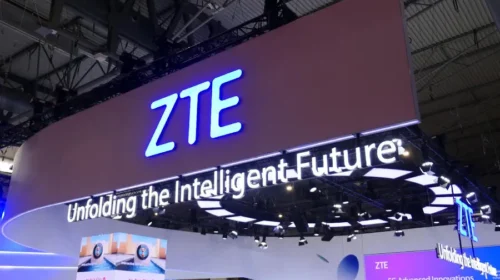Cambricon to raise $700 million in race to build a Chinese AI chip leader
The advanced chipmaker has posted strong recent revenue growth and became profitable at the end of last year, as it recovers from U.S. sanctions
Key Takeaways:
- Cambricon aims to raise 5 billion yuan through a new share placement, with plans to use the money to develop large language model chips and software
- The AI chipmaker’s explosive growth masks its risky dependence on a few major clients, threatening future revenue stability.
By Hugh Chen
Tightening U.S. chip export restrictions on China, including new measures in April effectively banning Nvidia’s advanced H20 chips from the country, have created a significant opening for domestic Chinese chipmakers eager to fill the void. Cambricon Technologies Corp. Ltd. (688256.SS) stands out among those with its aggressive push to fill that gap, feeding demand for specialized AI chips from companies whose products are increasingly penetrating daily life.
But such complex work requires big R&D spending, even for a company that raised 2.6 billion yuan ($362 million) in its 2020 IPO on Shanghai’s Nasdaq-style STAR Market. That’s leading Cambricon to propose a plan to raise a fresh sum of up to 4.98 billion yuan through a private placement, which the Shanghai Stock Exchange approved last week, providing it with more firepower to advance its expansion strategy.
According to Cambricon’s filing documents, the 4.98 billion yuan will be raised by issuing up to 20.87 million shares to up to 35 investors. The company plans to spend 2.9 billion yuan of the proceeds on large language model (LLM) chip projects, 1.6 billion yuan on LLM software projects, and 480 million yuan to supplement its working capital.
This funding will provide Cambricon with significant resources to strengthen its R&D capabilities and expand its product portfolio, as it seeks to gain market share. The company was already riding high after reporting strong first-quarter results in April, with revenue reaching 1.1 billion yuan — a remarkable 4,230% increase from a year earlier. The quarter also marked Cambricon’s second consecutive quarter in the black – a rare feat for AI companies.
As China’s leading listed AI chip stock, Cambricon has attracted considerable investor interest, with many betting that the company will benefit from U.S. sanctions that are accelerating domestic chip development. While the stock is traded in Shanghai, which is largely closed to foreign investors, it is also available to international buyers in Hong Kong via the Shanghai-Hong Kong Stock Connect program.
At its Monday close of 610 yuan, Cambricon’s stock has more than tripled so far this year, following a remarkable 387% surge in 2024 that made it the top performer among China’s stocks listed on its two main exchanges in Shanghai and Shenzhen. The stock is now up nearly tenfold from its 2020 IPO price of 64.39 yuan.
But such a dramatic price increase has stretched Cambricon’s valuation. Its forward price-to-(P/E) earnings ratio currently stands at a hefty 267, though that should come down rapidly as its profits rise. Still, the ratio is significantly higher than Nvidia’s (NVDA.US) ratio of 46. Even domestic peer Hygon (688041.SH), which manufactures both traditional CPU servers and GPU chips, trades at a lower though still inflated ratio of 146.
Client concentration
Founded in 2016 and based in Beijing, Cambricon was spun off from a project at the Chinese Academy of Sciences by brothers Chen Tianshi and Chen Yunji, both computer science PhDs. The company initially focused on developing chips for devices such as smartphones before switching to server chips for cloud computing centers. It debuted its first-generation AI cloud chips, the Siyuan 100 series, in 2018.
Cambricon gained significant industry attention in 2021 with the release of the MLU290, part of its next-generation product series. At the time, it was regarded as one of the most advanced AI training chips developed by a Chinese firm.
The company’s recent strong results represent a dramatic turnaround from an extended period of weakness, including just 26 million yuan in revenue in last year’s first quarter. The prolonged downturn owed largely to U.S. sanctions that placed Cambricon on the Commerce Department’s Entity List in 2022, forcing it to discontinue its partnership with Taiwan’s TSMC, which manufactured many of its most advanced products.
The company’s sharp rebound over the past two quarters suggests it has found domestic partners to manufacture its chips. U.S. export controls on advanced chip production equipment have severely constrained domestic manufacturing capacity for the most cutting-edge AI chips. Until recently, scarce capacity for such chipmaking was reserved for a few priority clients such as Huawei, a domestic leader in smart technologies, including chipmaking.
However, while Cambricon’s strong growth of the past two quarters appears promising, it is heavily concentrated among just a few major clients, with its top five contributing 95% of its revenue last year, according to the company’s disclosure. While Cambricon hasn’t provided more specifics, local media reports indicate that ByteDance, parent of TikTok and Douyin, is behind the recent revenue surge and contributes the majority of the company’s revenue.
Having a prominent client like ByteDance is certainly beneficial, though it also poses significant customer concentration risks. The company experienced such risk previously from 2016 to 2019, when Huawei was its largest client, using Cambricon’s chips in its smartphones. In 2018, Huawei contributed 114 million yuan of Cambricon’s sales revenue, representing 98% of its total. But sales to Huawei plummeted to just 64 million yuan in 2019 when Huawei ceased using Cambricon’s products after developing its own in-house chip capabilities.
Competition in China’s AI chip market is also intensifying. Cambricon’s primary competitor is Huawei, which boasts the most advanced chips among domestic players and currently enjoys a supply chain advantage that other chipmakers cannot match. Most notably, those include a partnership with leading local foundry SMIC, which gives Huawei access to much of SMIC’s limited and highly sought-after advanced chip manufacturing capacity.
At the end of the day, the potential of China’s AI chip market is enormous and has room to support many producers, especially in the absence of major Western suppliers for the most advanced products. Morgan Stanley predicted in a client note released in May that domestic GPU makers could generate 287 billion yuan in sales by 2027, capturing 70% of the China market, up from 30% last year.
Cambricon would need to diversify its client base beyond its current heavy reliance on a few major customers to capitalize on this opportunity. That means it would need to spend more on building new client partnerships and continue investing in R&D to compete effectively with established players like Huawei in an increasingly crowded market. Its latest fundraising, and recent move to profitability, all look like steps in the right direction.
To subscribe to Bamboo Works free weekly newsletter, click here




